Starting Phyllostachys nigra ‘Henon’ seeds
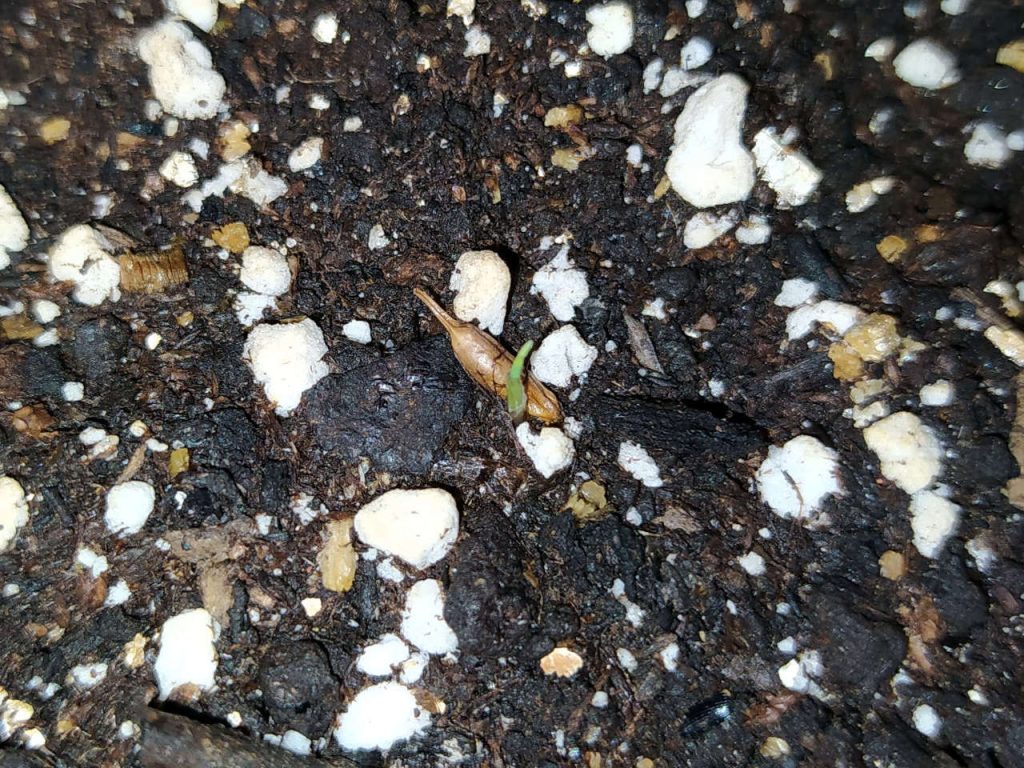
I received some bamboo seeds from fredgpops (another bamboo enthusiast from Bambooweb) last October and less than a week later, one of them sprouted. The seedling I got, was an offspring of Phyllostachys nigra ‘Henon’ bamboo. Sadly none of the regular nigra or Chusquea gigantea had germinated, I hope I can try again next year.
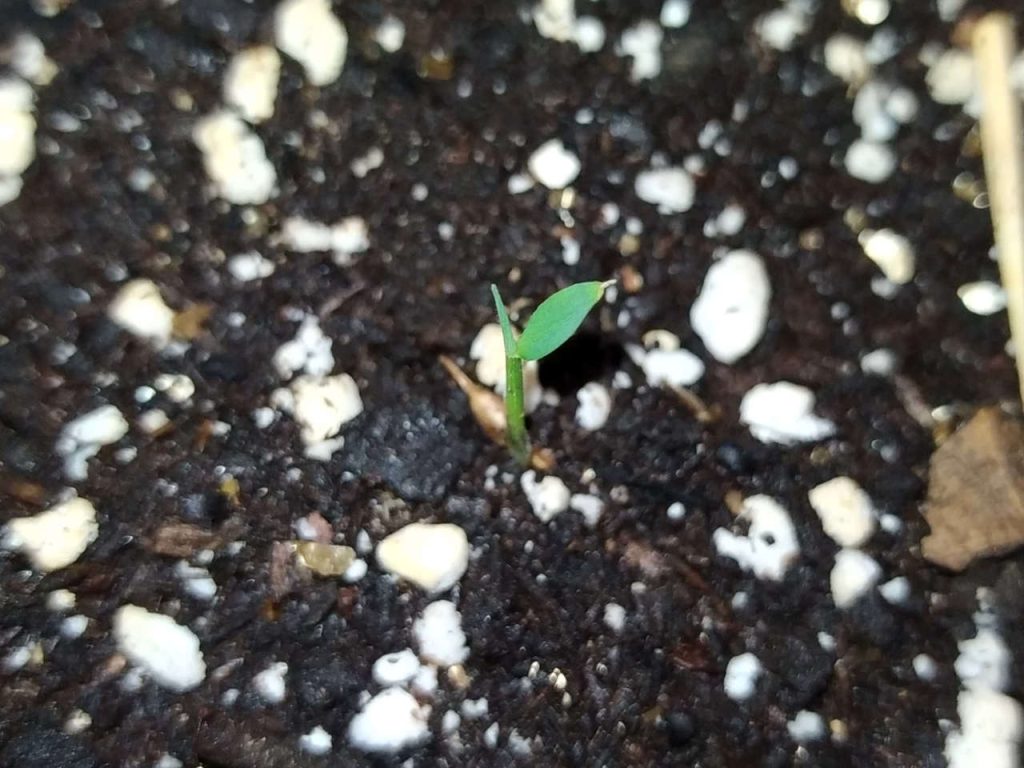
Sole survivor
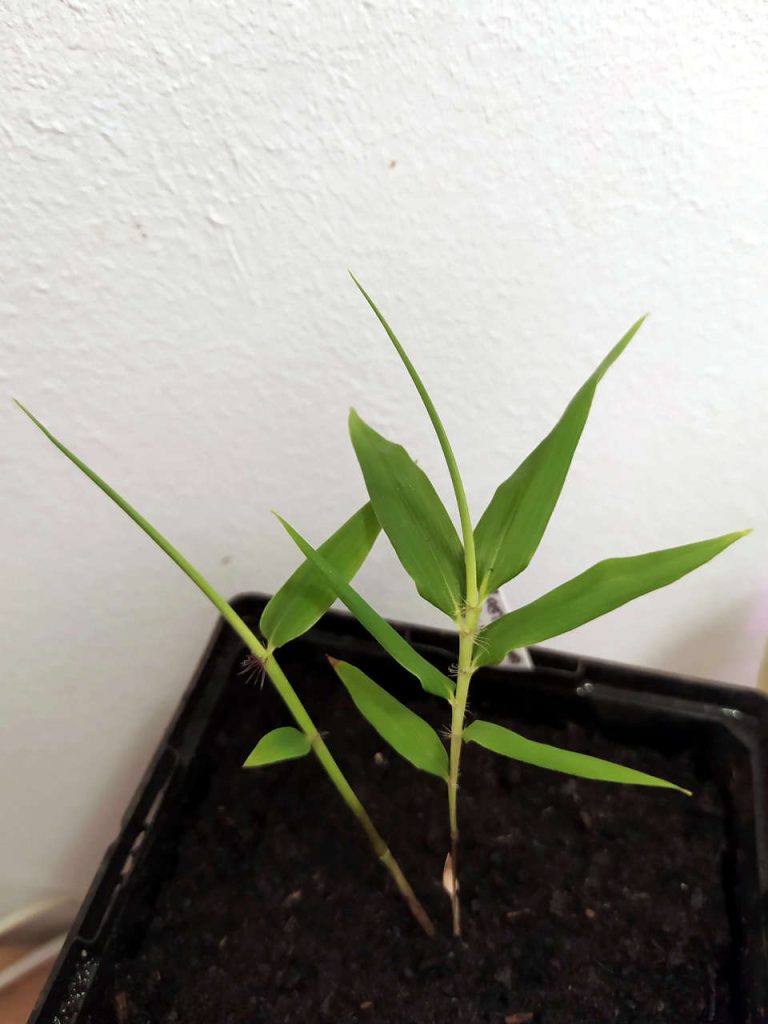
The seeds I received were mostly empty, underdeveloped or damaged. I think that hungry birds already took care of them, before the seeds were collected. I expected at least some germination from the remaining seeds, but they eventually started rotting and perished. Some of the damage and poor germination could be the result of slow transport from The US to Slovenia.
One of the seeds, however, sprouted very fast and started growing vigorously from the early beginning. It doesn’t have any leaf coloration or other apparent characteristics that would make it look special.
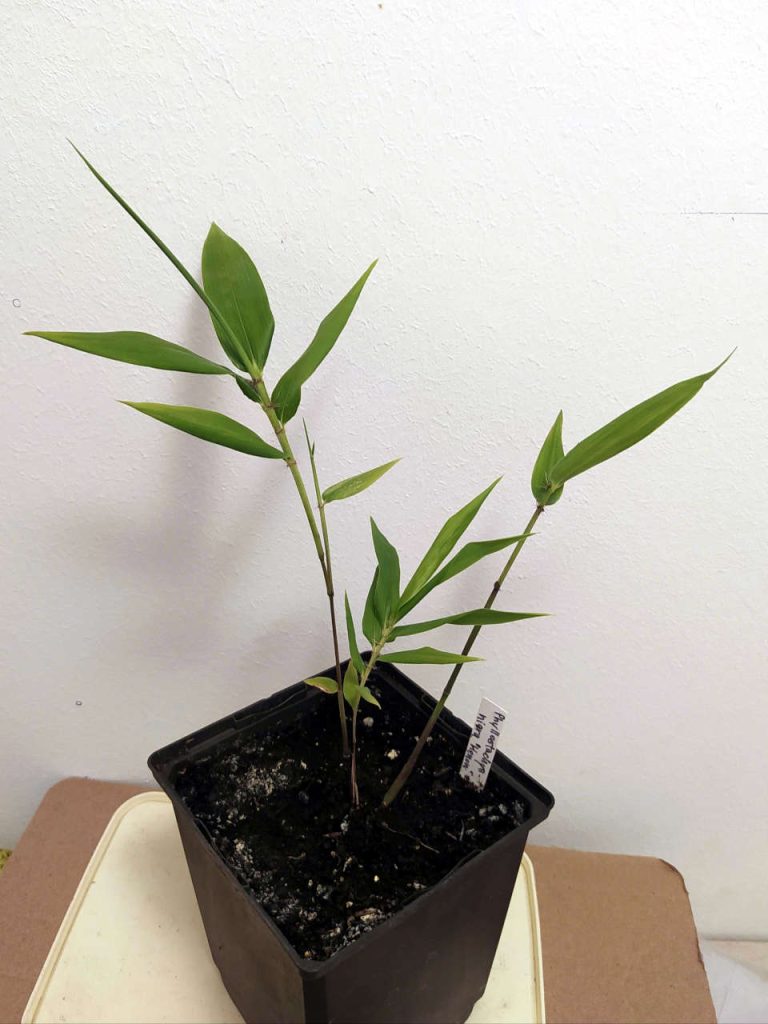
Problem with mites
When the seedling was a couple of months old, I made a mistake and brought in some mite infected cuttings. Since the plants are somewhat congested under the grow lights, mites started colonizing the area. In only a couple of weeks, they were everywhere. The most hit were my Hibiscus rosa-sinensis seedlings which dropped leaves completely. The infected Nerium oleander cuttings got badly damaged as well. I sprayed the whole area and nearly killed my carnivorous plant collection in the process, but it seems that mites perished in the process.
Slow growth after a couple of shoots
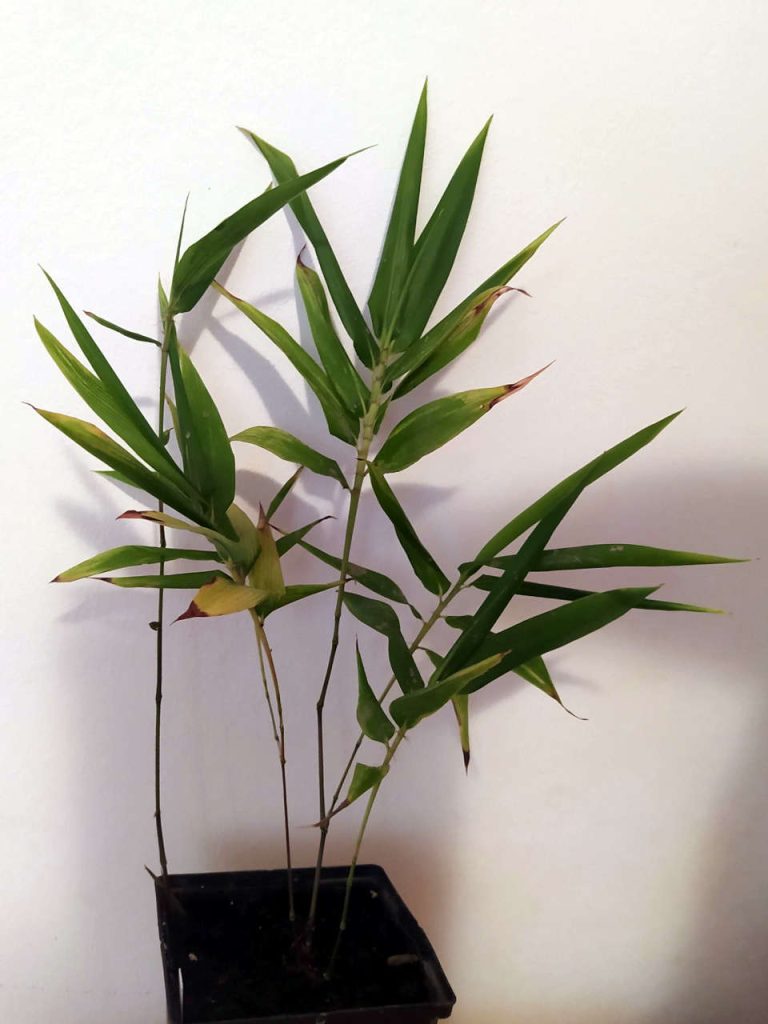
After the mite infection, the seedling stopped shooting every couple of weeks and remained at 4 shoots it had before. As the seedling stopped shooting, I thought that mites caused it to suffer. As I noticed later, it wasn’t even slowing down – not at all. Most if not all Phyllostachys I’ve grown so far, and I’ve grown many, managed to put out numerous shoots at their juvenile stage, before they eventually started running and ceased to produce shoots. At that point, when the seedlings started running, they only produced whip shoots from the exposed rhizomes. They just wait for the spring to arrive to start their regular shooting cycle.
Runners!
As I poked around the pot when I watered the seedling, roughly 3 months after germination, I noticed the first runner escaping far away from the initial clump on the edge of the pot. Since bamboo seedlings usually starts running at least a year after sowing, it came as a surprise – yet, I’ve seen the same thing happen with my Phyllostachys arcana seedlings before. As it seems, grow lights I use make a great difference and can really speed-up seedling’s development. Around a month later, less than 4 months old juvenile already colonized the pot with rhizomes and started to deform its plastic nursery pot.
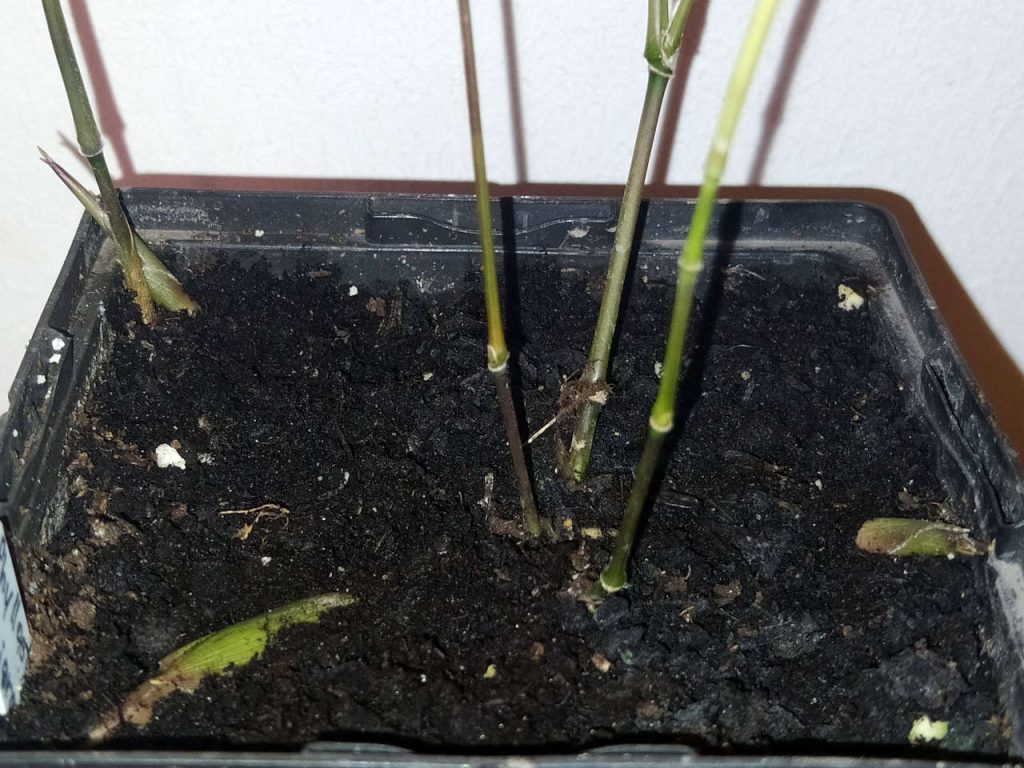
Another bamboo in my collection
From the point when bamboo starts actively running, its growth usually gets exponential. Bamboo effectively uses all the resources it can lay its roots on and if it feels comfortable enough in the given climate, starts rapid development towards the mature stage. If I find proper location with enough space and nutrients, I’m sure I can expect first 1cm+ diameter culms in less than 2 years. From that point everything goes even faster.